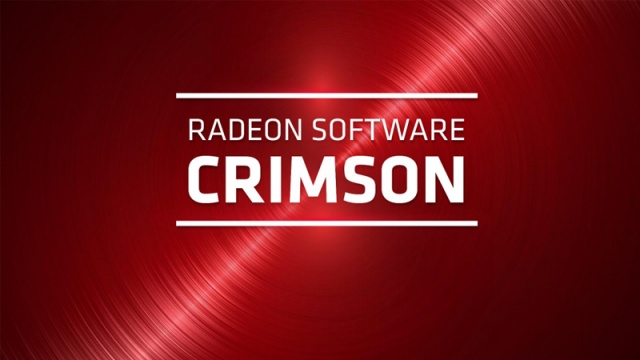AMD recently changed the way it approaches its drivers, with the launch of Radeon Software: Crimson Edition. Unfortunately, some users with the update have found that the driver has been causing low fan speeds on some GPUs, which also causes abnormally high load temperatures. Fortunately, AMD is aware of the issue and has officially responded to it.
In an email sent to use earlier today, AMD outlined its intention to release a hotfix for this issue today and announced that it has already identified the cause of the problem.
“We're aware of isolated reports of low fan states following the installation of Radeon Software ‘Crimson Edition' on select Radeon GPUs. Our engineering teams have identified and addressed this issue, and we intend to release a hotfix on amd.com this coming Monday, November 30th.”
So if you recently updated to the Crimson driver and have been experiencing abnormal GPU fan activity, then check the site at some point today and get the hotfix installed.
Discuss on our Facebook page, HERE.
KitGuru Says: Have any of you updated to AMD's new Crimson driver already? Were you affected by this issue at all?
 KitGuru KitGuru.net – Tech News | Hardware News | Hardware Reviews | IOS | Mobile | Gaming | Graphics Cards
KitGuru KitGuru.net – Tech News | Hardware News | Hardware Reviews | IOS | Mobile | Gaming | Graphics Cards




My Gigabyte WIndforce R9-290 (non-X) does not appear to be affected.
Are they primarily one or two brands? Or one or a few specific models? Is it tied to cards with non-reference fan control schemes/systems/hardware/software/firmware?
Yea, if I have not watched the sensors through Afterburner, my card would by fryed by now. It reached 96°C core and 110 vrm with the fan idling at 25%. Never have I alt-tabbed so quickly in my life to turn up the fans to 100%.
Hmm, That problem occurs only in new Trixx Utility ! (or you’ll need to set Custom Fan Speed)
I have old Moded TriXX and Fan’s on Auto, NP with My R280X
Also some of the “users” turned-Off AMD Fuel Service, witch BTW control all OC/Fans etc.
Without it New Crimson don’t work Properly !
Here is My Guide on How-TO
-> http://loccothan.blogspot.com/p/tweaks.html
That’s still safe. I’ve had cards hit 125°C VRM.
What card do you have?
Good thing I always run a custom fan profile.
Luckily, it looks like the Radeon HD 7000 series is unaffected… if you have one of these GPUs still, it’s not gonna fry on these drivers! (NOTE: I haven’t used Afterburner or TRIXX on it so that part can’t be verified, but using it vanilla with a slight AMD OD overclock to 1000MHz, all seems cool over here)
dayum!… I’d be freakin’ if that happened to my cards! XDD
You do know that modern VRMs are rated at 125C 24/7 operation? This is the same myth that if a CPU/GPU runs at 90-95C, we should be worried. No we shouldn’t since they were designed to handle even higher temps. Check any NV/AMD GPU – almost all are rated at 95, 96, 98C and that’s not their actual max as that’s maximum safe operating temperature but they baked in more before actual failure of the transistors.
What happens at higher temperatures is you have reduced longevity (so instead of the card lasting 50 years, it might last 10) and your overclock will be compromised. VRMs are the same thing. 110-125C won’t kill your graphics card but it will be harder to overclock as much.
Yeah these modern GPU’s can be pushed well into the 100’s would want mine to be getting there, never gets above 80c under full load(coz i use after market thermal compound on the chip under the heatsink for optimal heat dissipation.
If you have good GPU and CPU you no have to OC.
What I’m getting at is that if my GPUs, a pair of Radeon HD7950’s were running at 20% fan speed all the time under heavy load, then within about 10 minutes, their temperatures would easilly be over 100*c. The cards themselves are rated for safe operation at 85*c and the Tahiti dies that they have in them will fail, or, if I’m lucky enter a crash state to try and preserve themselves at 105-108*c. After that, their lifespan would be debatable since the stresses of reaching such a high temperature are likely to cause damage to the vias that bond the silicon die to the substrate. As for VRM… those are hot little beasts as is, but of course, being rated for 130*c average, they’re able to take a hell of a beating and still be functional. At worst, the VRM will hit its TJunction temperature and begin to throttle back to try and stop a meltdown… at worst, you’ll have MOSFETs all over your chassis because the solder beneath them melted and they peeled off the board!!